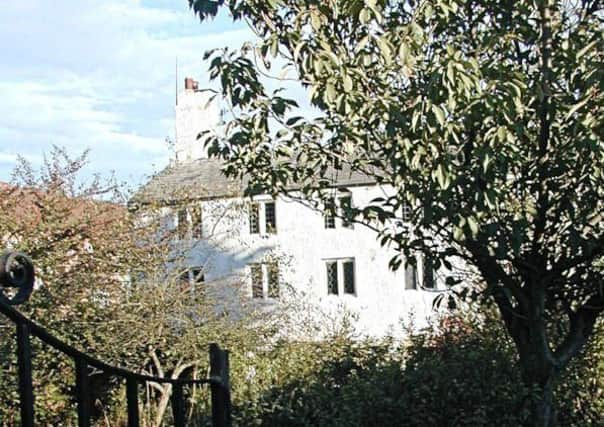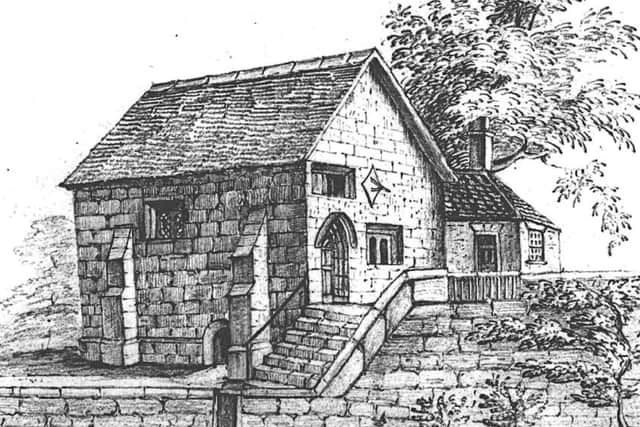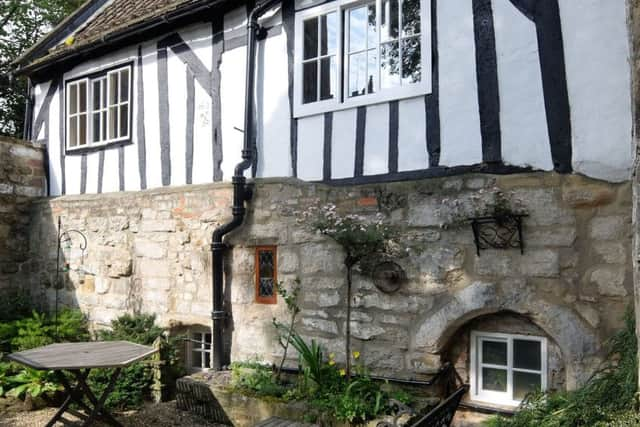The Civic Society Column with David Winpenny


The House of Correction
On 3 November 1629 the Mayor and Aldermen of Ripon petitioned the Archbishop of York, Samuel Harsnett, who held the legal power in the Liberty of Ripon, for a House of Correction. They asked that ‘a house of correction shall be erected at Ripon, and that a petition may be sent to his Grace to move his Majesty to procure from his Majesty a house at Ripon to make a house of correction for setting the poor to work in.’ It seems nothing came of this request.


More than 50 years later, the city decided to take action itself.
Advertisement
Hide AdAdvertisement
Hide AdOn 31 March 1683, the council minutes record, it was ‘Ordered and agreed that the mayor and other justices of the peace for this corporation shall set up a workhouse and house of correction (for setting the poor here on work, and punishment of such as by law are there punishable) accordingly as they shall think fit.’
As a result of this decision, the current building was erected in 1684. The House of Correction was a place to which beggars and vagrants were committed under the Poor Law Acts.
Here, the Justices of the Peace could detain people of ‘loose, idle and disorderly conduct’ usually for no more than two weeks.


When in the House they had to undertake some form of hard labour. The entrance doorway on St Marygate underlines the status of the building; above it is the royal coat of arms and some real, fearsome-looking chains.
Advertisement
Hide AdAdvertisement
Hide AdIt was intended to strike fear into the hearts of the local ne’er-do-wells.
Figures prepared for a parliamentary inquiry into prisons and houses of correction in 1836 show that in the year from 1833 to 1834, 97 people were admitted to Ripon’s House of Correction.
Twenty-three were women, and five were under 17 years old. The highest number of prisoners at one time was 18 – which meant there were two in each of the nine cells – and 13 had been on hard labour. None had been whipped, placed in irons or kept in solitary confinement. No one had died when in the House.


The building is in private ownership.
Liberty Courthouse
The Liberty of Ripon was a wide area of land around the city where the law was administered not by the king’s courts but by the Archbishops of York. It is said to have been established by King Athelstan, grandson of Alfred the Great, in 973 AD, and confirmed by King Stephen.
Advertisement
Hide AdAdvertisement
Hide AdThe Liberty included the right of sanctuary – protection from arrest – within a mile of the monastery church of Ripon – later called the Minster and now the Cathedral). The boundaries of the sanctuary were marked by eight crosses, of which only the stump of one remains, at Sharow. It is cared for by the National Trust – its smallest property.


The Liberty survived as a legal quirk after the Reformation, and was zealously guarded by successive archbishops and by the city fathers, until national reform of the legal system in the first half of the 19th century. To mark this change this new courthouse was built in 1830 as a replacement of an earlier building that was on the site of the former palace of the archbishops.
Both magistrates’ courts and the Quarter Sessions were held here, and the building continued to play an important role in the civic business of the city. After Quarter Sessions ceased in 1953 the court continued as a Magistrates Court – and was given an extension at the back, but another legal rationalisation meant that it closed in 1998.
A year later Ripon Museum Trust established a museum in the building, recognising its importance as a virtually unchanged Georgian Courthouse.
Advertisement
Hide AdAdvertisement
Hide AdIts interiors were redecorated in the original colour scheme and it now houses a permanent display showing the building’s use. On display are the Jury Room, with the halberds that were carried as magistrates processed to the opening of the Quarter Sessions, the Justices’ Retiring Room and the Court Room with its the two docks and the witness box.
Old Court House
This is one of Ripon’s oldest structures, and part of the history of both the church and the city.
The long main range of the building probably dates from the 14th century and may possibly include materials from the former Archbishop of York’s palace. It seems to have been built as a courthouse for the ‘Canon Fee’ – the area of land within the archbishop’s holdings was administered by the canons of the Minster (now the cathedral) next door.
The part to the south, with its timbered upper floor, may have once stood alone as a kitchen block – it was sensible to keep possible fires away from the main structure.
Advertisement
Hide AdAdvertisement
Hide AdAt some point in its history it was joined on to the main block, where the hall on the upper floor was a court room. The lower floors were used as a prison, with cells and rooms for the gaoler.
By the mid-17th century the church had given up the use of the building, which became the town gaol.
There were major alterations in about 1613, providing both domestic quarters for the gaoler and more secure cells. Strong iron bars were put over some of the windows, and strong iron doors, and even an iron ceiling, were provided. Court cases continued to be held in the hall until the middle of the 18th century.
Felons continued to be held in the cells until 1816, when the House of Correction took over the role. Court hearings were transferred to the Liberty Courthouse in 1830. Thereafter, until 1858, the prison continued to be used for debtors.
At one time they were charged 15 shillings and fourpence when they were admitted to the cells.
The building remained in the church’s possession until the 1950s; it is now a private house.